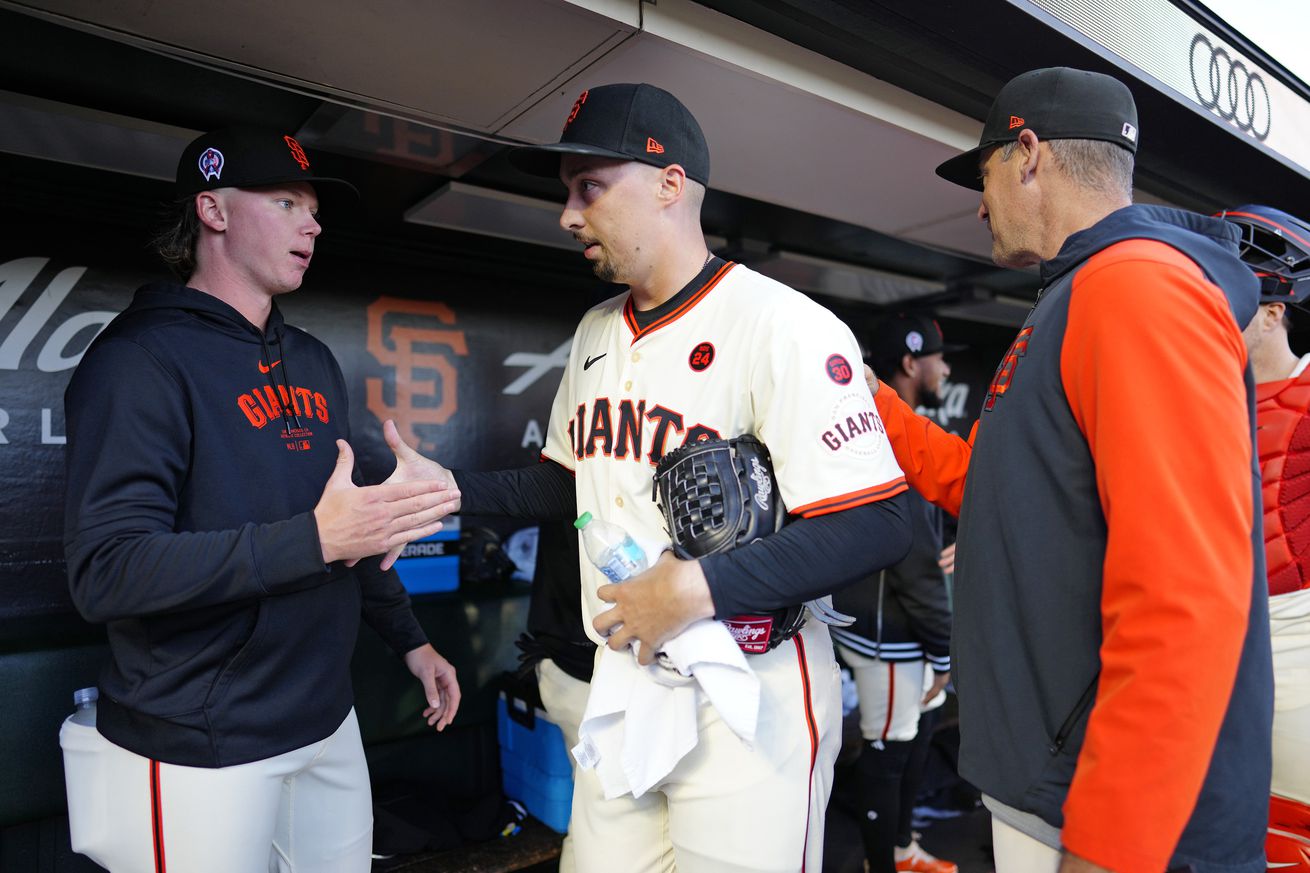
A very cool development with this year’s pitching staff will be on display for the final three games of the season.
While researching Hayden Birdsong’s Statcast figures to test a hypothesis that he’d be better served switching from a four-seam fastball to a sinker (more on that later), I stumbled across a happy bit of coincidence. Earlier today, Maria Guardado, the San Francisco Giants beat writer for MLB.com, posted the pitching probables for this weekend’s season finale against the St. Louis Cardinals:
Giants probables for their final 2024 series against the Cardinals:
FRI: RHP Landen Roupp
SAT: LHP Blake Snell
SUN: RHP Hayden Birdsong— Maria I. Guardado (@mi_guardado) September 26, 2024
The coincidence is that I had this in mind while looking up Birdsong’s figures and discovered that these three pitchers happen to have three of the top 25 curveballs — according to Run Value — in Major League Baseball. If you’re foggy on what that means or borderline don’t care, here’s Statcast’s reminder:
Run Value Definition: the run impact of an event based on the runners on base, outs, ball and strike count.
Statcast links to sabermetrician Tom Tango’s blog for a bit more detail:
The idea is that every base-out situation has a run potential. And after the event, the new base-out provides a new run potential. The CHANGE in those run potential is what we attribute to the event. A strikeout with bases empty and 0 outs for example turns the run expectancy from .481 runs to .254 runs. And so, the change in run expectancy, or the run value, of the strikeout is -0.227 runs. If the bases are loaded with one out, a strikeout has a run impact of a whopping -0.789 runs. So, the impact of the event is highly dependent on the circumstances.
This is why I don’t love the Run Value stat — context fluctuates game to game, year to year — but at least in terms of analyzing what has happened, it’s solid and another way to evaluate individual pitches beyond spin and velocity. That’s why I called their curveballs “most valuable” rather than best. While results of their usage would be a logical factor in determining the “best” of something, quality of the pitch matters, too, and that’s a bit beyond the scope of this post.
For now, it’s enough to say that one great starter and two promising starters currently on staff have a very effective secondary pitch. Here’s how they fall on the current chart:
Blake Snell, +10 RV | MLB: 5th, NL: 4th
Landen Roupp, +4 RV | MLB: 25th, NL: 15th
Hayden Birdsong, +4 RV | MLB: 30th, NL: 18th
Hitters have a combined .140 batting average against their curveballs.
Roupp leads the trio in terms of usage, deploying his curveball 44% (or 360 times), so it’s the pitch he throws the most. Only Pierce Johnson (72.7%), Alex Lange (57.8%), Drew Smyly (48.6%) and Ray Kerr (47%), and Nick Anderson (45.5%) have used theirs more frequently, and if you see a pattern that’s because they’re relievers, as Roupp still largely is despite the three starts he’s made this month. To illustrate the point, he went from a 50% usage rate on the curveball in his first start September 10th, then 36.5% in start 2 on September 15th, and in his most recent start on 9/21, it ticked up to 41.4%… but that was also a season high in pitches for him (87).
Snell’s 26.1% usage rate on the pitch is still pretty high up there (42nd out of 251 eligible players). Hayden Birdsong’s 19.5% rate checks in at 81st. Just for some added context: there are two other Giants within this top 81 in terms of curveball usage: Sean Hjelle (34.7% – 16th) and Tristan Beck (21.8% – 63rd). Beck has thrown his just 37 total times so he hasn’t really had much of a reason to add or subtract from the Run Value on the pitch, hence its 0 figure. Hjelle, meanwhile, has thrown his 411 times and has a -2 Run Value.
Is any of this important? Absolutely. Back in March, Grant Brisbee heralded Snell’s arrival with a breakdown of his repertoire, citing the curveball specifically as one of the best pitches in baseball. For both Birdsong and Roupp, these are both well-developed secondary pitches that will only make them — and their whole arsenals — better with refinement. While the four-seam fastball might not be as effective as a moving sinker, what’s gained by having a strong secondary pitch is that the fastball doesn’t have to be quite as dominant. Batters have enough to keep in mind in an at bat, and knowing they can’t just sit on one pitch is a good thing. Commanding the fastball, of course, is where Birdsong (especially) and Roupp have to sort things out.
And that’s why Hayden Birdsong doesn’t necessarily need to ditch the four-seamer (which, btw, has a +1 Run Value). While the sinker-slider combo is the one we see most often from Giants call-ups and free agent additions, and while Roupp & Birdsong both have sliders they can use effectively, the curveball has been outnumbered nearly 2:1 in terms of usage this season (110,917 sliders thrown through yesterday vs. 56,871 curveballs) and so throwing a one well can be as — if not more — effective than a lab-designed slider or sweeper.
If you’re looking for positives going into next season — particularly where the pitching staff is concerned — Birdsong and Roupp already have standout arsenals.